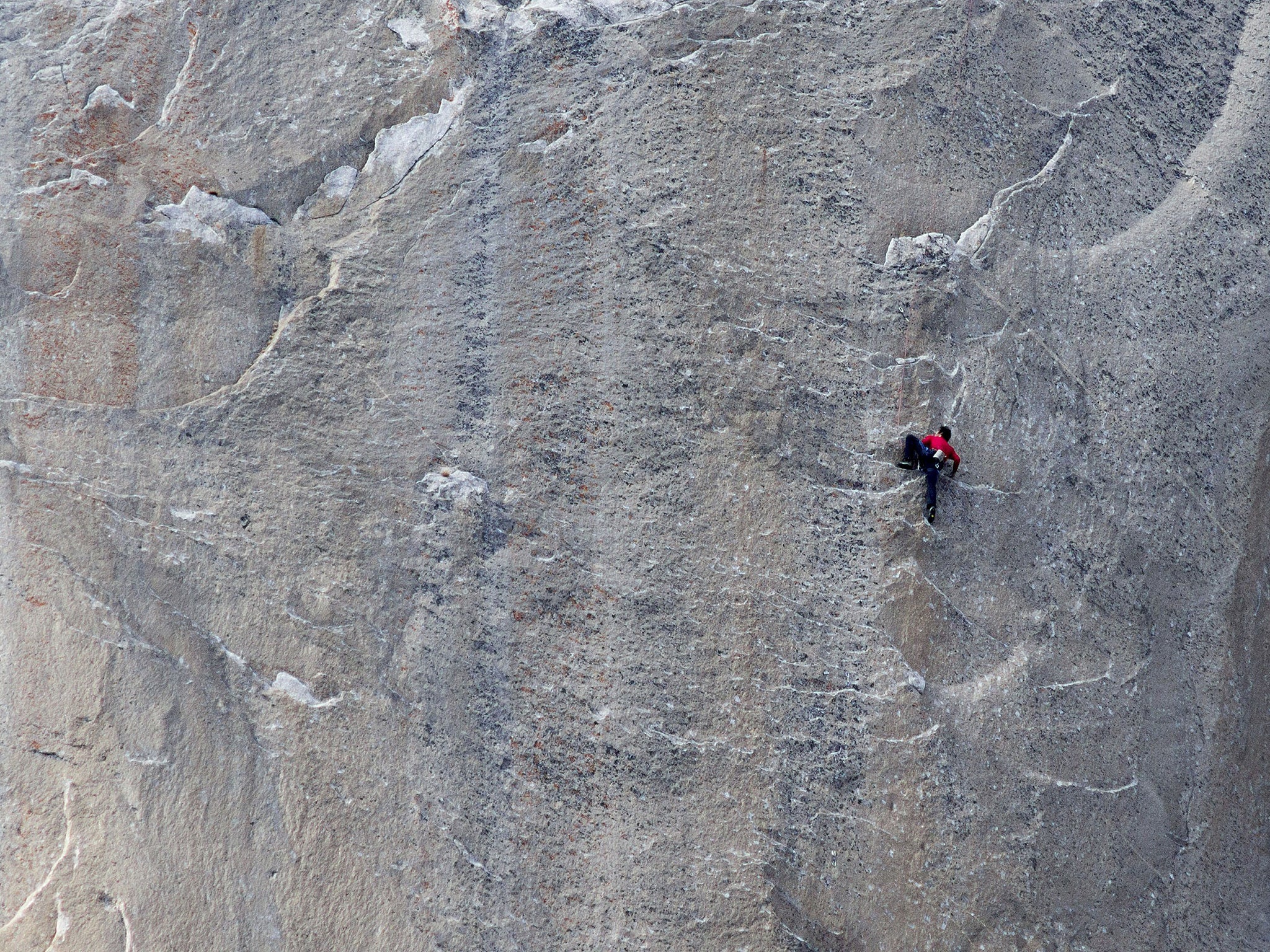Yosemite's El Capitan: Free climbers reveal they used 'positive thinking' to beat world's toughest cliff
President Barack Obama tweeted: 'You remind us that anything is possible,' after Tommy Caldwell and Kevin Jorgesen's successful ascent

Your support helps us to tell the story
From reproductive rights to climate change to Big Tech, The Independent is on the ground when the story is developing. Whether it's investigating the financials of Elon Musk's pro-Trump PAC or producing our latest documentary, 'The A Word', which shines a light on the American women fighting for reproductive rights, we know how important it is to parse out the facts from the messaging.
At such a critical moment in US history, we need reporters on the ground. Your donation allows us to keep sending journalists to speak to both sides of the story.
The Independent is trusted by Americans across the entire political spectrum. And unlike many other quality news outlets, we choose not to lock Americans out of our reporting and analysis with paywalls. We believe quality journalism should be available to everyone, paid for by those who can afford it.
Your support makes all the difference.Two American climbers who successfully scaled a 900-metre vertical rock face considered the world’s toughest climb have said the feat was a test not only of their fingers and toes, but of their will.
Tommy Caldwell, 36, and Kevin Jorgesen, 30, who completed their ascent of El Capitan’s “Dawn Wall” in Yosemite National Park on Wednesday afternoon, spoke to Good Morning America today about what Mr Caldwell called an “incredible experience”.
Mr Jorgesen said overcoming one of the 19-day climb’s most challenging moments required the power of positive thinking. “The word that I used is just ‘resolve’,” he said. “I didn’t want to accept any other outcome but getting up that route, so I tried to push all the negative thoughts of not being able to do it out and picture getting across that traverse – and that’s eventually what happened.”
Mr Caldwell and Mr Jorgesen were the first men in history to complete an uninterrupted free climb of El Capitan’s south-eastern route, meaning they made their ascent using only their hands and feet, and used ropes for safety alone, to break their fall should they slip from the perilous rock face. The Dawn Wall, a smooth, sheer granite rock face three times the height of the Shard, is so named because it catches the day’s first rays of sunlight.
They were congratulated by well-wishers including President Barack Obama, who tweeted: “You remind us that anything is possible.”
The two men are now recovering from the climb, with Mr Jorgesen telling Good Morning America that he had “lot of bruises and cuts” on his hands, while Mr Caldwell apologised for his hushed tones, claiming his voice had “gone from yelling for Kevin so much”.
The pair were met at the summit by a crowd of about 40 family and friends who had trekked the long way round: an eight-mile trail up the other side of El Capitan. The granite cliff was first scaled by climbers in 1958; others have ascended by several dozen routes.
“It’s the hardest rock climb in the world,” said Leo Houlding, who became the first British climber to complete a free ascent of “El Cap” in 2012. Speaking to The Independent recently, Mr Houlding explained: “You break a cliff like this into pitches, which are basically rope lengths. This is 30 climbs, one on top of the other. Ten of them are world-class standard and two are as hard as anything anywhere.”

For the past three weeks – the climb began on 27 December – Mr Caldwell and Mr Jorgesen have spent their nights in tents suspended some 350 metres up the wall. After free-climbing each day’s pitches, they used ropes to rappel to the base camp to eat and sleep, and then to return to the last point of the ascent for the next day’s climb.
Mr Caldwell began planning the climb almost a decade ago, several years after severing his left finger in a DIY accident – an injury he feared would end his climbing career. Mr Jorgesen joined Mr Caldwell’s quest to conquer the Dawn Wall in 2009. The pair’s first attempt, in 2010, was called off due to storms. During a second attempt the following year, Mr Jorgesen broke his ankle in a fall, while Mr Caldwell’s ascent was stymied by one of the wall’s most notoriously difficult pitches.
As for what’s next for the pair, Mr Jorgesen said “maybe some bouldering… something a little more light.”
Mr Jorgesen told the New York Times he hoped their feat would inspire others to “find their own Dawn Wall.” He said: “We’ve been working on this thing a long time, slowly and surely. I think everyone has their own secret Dawn Wall to complete one day, and maybe they can put this project in their own context.”
Join our commenting forum
Join thought-provoking conversations, follow other Independent readers and see their replies
Comments